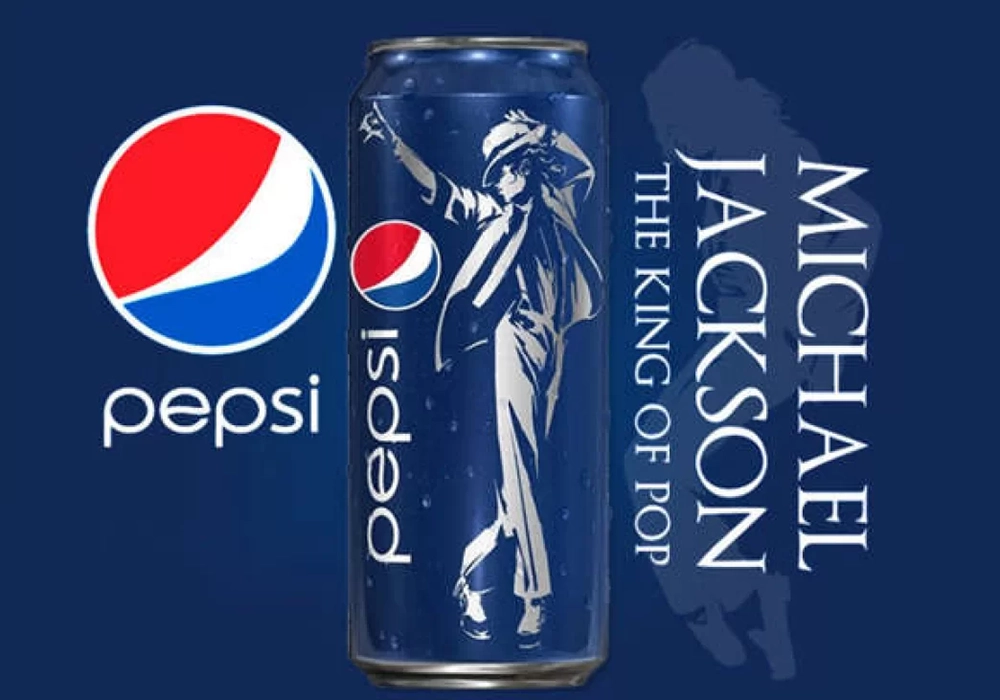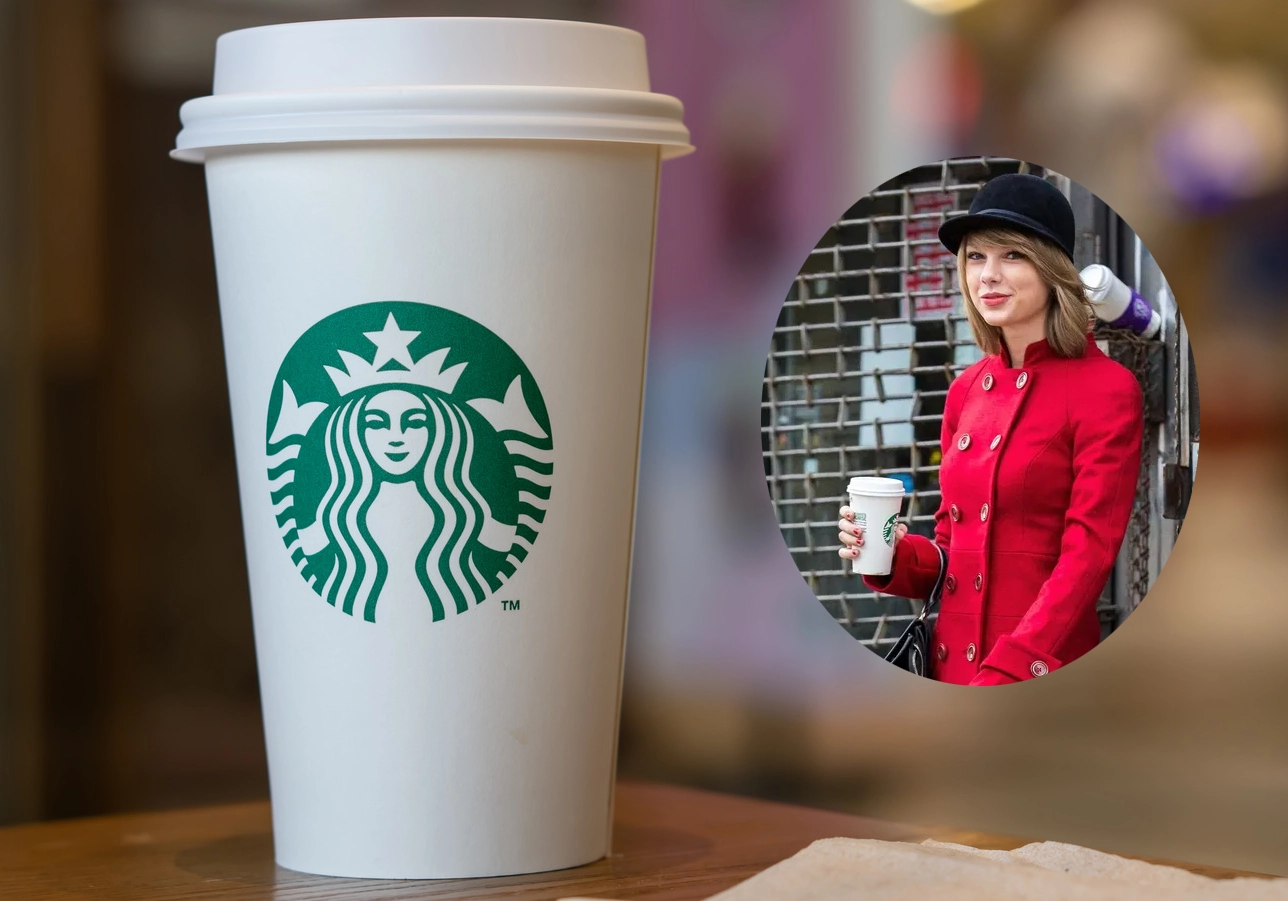Elevate Your Influencer Marketing Strategy
Influencer marketing is powerful, but achieving optimal results requires a strategic approach. This listicle delivers 10 best practices to enhance your campaigns. Learn how to select the right influencers, build strong relationships, create compelling content, and measure your success. These strategies are crucial for maximizing your reach, building trust, and driving tangible business outcomes through authentic audience engagement. Get ready to optimize your influencer marketing and see real ROI.
1. Strategic Brand-Influencer Alignment
Strategic Brand-Influencer Alignment is the cornerstone of successful influencer marketing. This approach prioritizes partnering with influencers whose personal brand, audience demographics, and content style genuinely align with your brand’s values, target market, and marketing objectives. It moves beyond simply chasing large follower counts and focuses on building authentic partnerships that resonate with the right audience. This means identifying influencers whose voice and audience composition naturally complement your brand, creating a synergistic effect that boosts the impact of your promotional content. Instead of a transactional approach, strategic alignment fosters long-term relationships built on shared values and mutual benefit.
This strategy is crucial because it ensures that your brand message is delivered by a trusted voice to a receptive audience. A fitness influencer who genuinely uses and loves your workout gear will be far more effective than one with millions of followers who has never heard of your brand. This authenticity translates into higher engagement, improved brand perception, and ultimately, a better return on investment.

Key features of Strategic Brand-Influencer Alignment include:
- Value-based matching over pure metrics: Prioritizing shared values and brand affinity over follower count alone.
- Audience demographic alignment analysis: Ensuring the influencer’s audience matches your target demographic.
- Content style compatibility assessment: Confirming the influencer’s content style aligns with your brand aesthetic and messaging.
- Long-term relationship potential evaluation: Looking beyond one-off campaigns and seeking influencers for ongoing collaborations.
Pros:
- Higher engagement rates from relevant audiences: Content resonates more deeply with an audience genuinely interested in the brand.
- More authentic content that resonates with followers: Influencers are more passionate and believable when promoting brands they genuinely admire.
- Lower risk of brand-influencer value misalignment: Reduced chance of controversies or negative publicity due to conflicting values.
- Better ROI through qualified audience targeting: Marketing spend is more effective as it reaches a highly receptive audience.
Cons:
- Requires more extensive research and vetting process: Identifying the right influencers based on alignment takes time and effort.
- May limit pool of potential influencer partners: Focusing on niche alignment can narrow the selection of available influencers.
- Can be more time-consuming than metric-based selection: Thorough research and relationship building requires a greater time investment.
Examples of successful implementation: Gymshark partnering with fitness influencers who genuinely use their products, Glossier collaborating with beauty content creators who embody their natural beauty philosophy, and REI working with outdoor adventure influencers who authentically live the brand’s values demonstrate the power of strategic alignment. These brands understand that genuine advocacy resonates far more effectively than forced endorsements.
Actionable Tips:
- Develop detailed brand personas: Clearly define your ideal customer to match with influencer audiences.
- Analyze engagement on past sponsored content: Look for authenticity indicators in the influencer’s previous partnerships.
- Conduct content audits: Ensure consistency between the influencer’s content and your brand’s messaging.
- Use social listening tools: Gauge influencer reputation and audience sentiment.
- Learn more about Strategic Brand-Influencer Alignment
Strategic Brand-Influencer Alignment deserves its place at the top of this list because it’s the foundation upon which all other best practices are built. It ensures that your influencer marketing efforts are not just tactical campaigns, but strategic initiatives that contribute to long-term brand growth. Brands like Daniel Wellington watches, Glossier, and Airbnb’s #LiveThere campaign have effectively utilized this strategy, demonstrating its power to build brand awareness, drive engagement, and ultimately, increase sales. By focusing on authentic partnerships and shared values, you can leverage the power of influencer marketing to achieve significant and sustainable results.
2. Micro and Nano-Influencer Leveraging
Micro and nano-influencer leveraging is a strategic approach to influencer marketing that prioritizes partnerships with influencers who have smaller, highly engaged audiences, typically ranging from 1,000 to 100,000 followers. Instead of chasing the massive reach of mega-influencers or celebrities, this method focuses on cultivating authentic relationships with influencers who have built strong connections within niche communities. These influencers often interact directly with their followers, fostering a sense of trust and credibility that translates into higher engagement rates and more impactful endorsements. This approach provides a cost-effective way to achieve marketing goals, making it ideal for businesses of all sizes, particularly those with limited budgets.
This strategy works by tapping into the genuine influence these individuals hold within their specific communities. Because micro and nano-influencers are often seen as relatable and trustworthy, their recommendations carry significant weight with their followers. Rather than coming across as paid advertisements, their content feels more like organic suggestions from a trusted friend, leading to higher conversion rates.

Several brands have successfully implemented micro and nano-influencer strategies. Sperry’s micro-influencer program, featuring everyday customers showcasing their boat shoes, effectively demonstrates the power of user-generated content. Glossier built its brand largely through micro-influencer marketing, relying on authentic reviews and recommendations to drive sales. Adobe, with its diverse creator partnerships for Creative Cloud products, targets specific niche communities within the creative industry, demonstrating the power of targeted reach.
Features and Benefits:
- Higher Engagement Rates: Micro and nano-influencers often boast engagement rates 3-5 times higher than macro-influencers.
- Affordable Partnership Costs: Working with these influencers is significantly more budget-friendly.
- Niche Audience Targeting: Their focused follower base allows for precise targeting of specific demographics and interests.
- Greater Perceived Authenticity and Trust: Their close relationships with followers create a sense of authenticity and trust, boosting credibility.
Pros:
- More cost-effective campaigns with higher ROI potential.
- Higher conversion rates due to trusted recommendations.
- Ability to target specific niche communities.
- Greater content volume for the same budget.
Cons:
- Requires managing more influencer relationships.
- Limited individual reach per influencer.
- May require more coordination for campaign consistency.
- More complex performance tracking across multiple partners.
Tips for Effective Micro and Nano-Influencer Leveraging:
- Create scalable onboarding processes: Streamline the process of bringing multiple influencers on board.
- Develop clear brand guidelines while allowing creative freedom: Maintain brand consistency while allowing influencers to express their unique voice.
- Use influencer management platforms: Simplify coordination and communication with multiple influencers.
- Track engagement metrics (likes, comments, shares) rather than just reach: Focus on quality interactions over sheer follower count.
- Consider always-on programs rather than one-off campaigns: Build ongoing relationships for sustained impact.
Micro and nano-influencer leveraging deserves a place in any best-practice list because it addresses a key challenge in influencer marketing: balancing reach with authenticity and ROI. While mega-influencers offer extensive reach, their endorsements can feel impersonal and expensive. Micro and nano-influencers bridge this gap, providing a cost-effective way to connect with highly engaged audiences and drive tangible results. This strategy is particularly relevant for marketing professionals, entrepreneurs, digital strategists, social media managers, and e-commerce businesses looking to leverage social proof and build authentic connections with their target customers. Companies like HelloFresh, Glossier, Daniel Wellington, and Later (a social media scheduling platform) have successfully demonstrated the effectiveness of this approach.
3. Value-Driven Relationship Building
In the fast-paced world of influencer marketing, it’s tempting to focus on quick wins and transactional campaigns. However, a truly effective strategy prioritizes building genuine, long-term relationships with influencers. Value-driven relationship building emphasizes cultivating partnerships that extend beyond single sponsored posts, integrating brands authentically into the influencer’s content ecosystem. This approach fosters deeper brand understanding, consistent brand representation, and ultimately, more impactful campaigns.
This strategy works by shifting the focus from one-off transactions to ongoing collaborations. Instead of simply paying for a single post, brands invest in building a relationship with the influencer, becoming a familiar and trusted presence within their community. This allows for more natural and credible integration of the brand’s message, as it’s woven into the influencer’s ongoing content narrative. Features of value-driven relationship building include:
- Long-term contract structures: Moving beyond single-post agreements to establish extended partnerships.
- Ambassador program frameworks: Formalizing relationships through structured programs with clear guidelines and benefits.
- Influencer involvement in product development: Leveraging influencer expertise and audience insights for product innovation.
- Exclusive collaboration opportunities: Offering unique opportunities to strengthen the bond and create buzz.
- Graduated partnership tiers: Establishing different levels of partnership with varying benefits and responsibilities, allowing relationships to grow organically.
Several brands have successfully implemented this approach. American Express has cultivated long-term relationships with business and lifestyle influencers, seamlessly integrating their brand into valuable content. GymShark’s athlete program is a prime example of how relationships can grow and evolve alongside influencer careers, providing increasing support and opportunities as athletes progress. Revolve’s consistent influencer network demonstrates the power of building a reliable community of brand advocates for ongoing fashion promotion.
Pros:
- More authentic integration into influencer content
- Deeper brand understanding from influencers
- Consistent brand representation over time
- Higher quality creative assets
- Better negotiating position on rates over time
Cons:
- Requires larger upfront investment
- Risk of influencer reputation changes
- Less flexibility to pivot campaign strategy
- Potential for creative staleness over time
Tips for Implementing Value-Driven Relationships:
- Start small: Begin with trial campaigns before committing to long-term partnerships. Building and nurturing relationships with influencers is crucial for long-term success. Effective communication is key, and using proven templates can streamline your outreach process. For example, resources like Top Influencer Outreach Email Templates for 2025 from Your Social Strategy provide valuable insights and influencer outreach email templates to get you started.
- Create tiered relationships: Develop tiered relationship structures with clear advancement criteria, offering incentives for increased engagement and commitment.
- Think beyond sponsored content: Explore collaboration opportunities beyond sponsored posts, such as product development, event appearances, or co-created content.
- Maintain regular communication: Implement regular check-ins and relationship maintenance activities to nurture the partnership.
- Consider exclusivity: Consider exclusive category agreements for key partners to strengthen their commitment and limit competitive exposure.
Value-driven relationship building deserves a prominent place in any influencer marketing strategy because it fosters authentic connections and long-term growth. While it requires a greater upfront investment and carries some inherent risks, the potential rewards – deeper brand integration, increased credibility, and stronger influencer advocacy – make it a worthwhile pursuit. By prioritizing genuine partnerships, brands can transform influencer marketing from a transactional tactic into a sustainable engine for growth.
4. Performance-Based Compensation Models
In the evolving landscape of influencer marketing, maximizing return on investment (ROI) is paramount. Moving beyond traditional flat-fee arrangements, performance-based compensation models offer a data-driven approach that directly links influencer payment to measurable business outcomes. This strategy incentivizes influencers to prioritize conversions—sales, leads, clicks—rather than simply focusing on content creation. By aligning incentives, brands foster a more accountable and results-oriented partnership.
How it Works:
Performance-based compensation ties influencer earnings directly to specific, pre-defined key performance indicators (KPIs). This could involve:
- Affiliate Link Tracking and Custom Discount Codes: Influencers receive unique links or codes that track sales generated through their promotions.
- Commission Structures Based on Sales or Leads: Influencers earn a percentage of each sale or a fixed amount for every qualified lead they generate.
- Hybrid Models: These combine a base payment with performance-based incentives, offering a degree of security for the influencer while still rewarding results.
- Tiered Bonus Structures: These motivate influencers to exceed targets by offering escalating bonuses for achieving higher levels of performance.
- Sales-Driven Revenue Sharing Arrangements: Influencers receive a share of the revenue generated from their promotional efforts.
Successful Implementations:
- Amazon Associates: A long-standing example of affiliate marketing, where influencers earn commissions on products purchased through their unique links.
- RewardStyle/LIKEtoKNOW.it: Popular platforms connecting fashion influencers with brands, facilitating commission-based partnerships driven by shoppable content.
- Sephora’s Affiliate Program: Beauty creators partner with Sephora, earning commissions on sales generated through their recommendations.
Actionable Tips for Implementation:
- Unique Tracking: Implement unique tracking links or codes for each influencer to accurately attribute conversions.
- Consider Hybrid Models: Offer base compensation alongside performance incentives to attract and retain top-tier influencers.
- Clear Attribution: Establish clear attribution windows and tracking methodologies to avoid disputes and ensure accurate measurement.
- Competitive Commission Rates: Research industry standards and offer competitive commission rates to incentivize influencers.
- Data Transparency: Provide influencers with access to performance data to enable them to optimize their strategies and maximize results.
When and Why to Use This Approach:
Performance-based compensation is particularly effective when:
- Driving Sales is the Primary Goal: If your campaign objective is to boost sales or generate leads, this model directly incentivizes those outcomes.
- Budget Efficiency is Crucial: This approach ensures that marketing spend is directly tied to tangible results, reducing financial risk.
- Data-Driven Optimization is Desired: The clear link between performance and compensation provides valuable data for campaign optimization.
Pros:
- Direct ROI Measurement: Provides clear visibility into the return on your influencer marketing investment.
- Incentivizes Conversion Optimization: Encourages influencers to focus on driving tangible business results.
- Reduces Financial Risk: Minimizes upfront costs and ensures that payment is tied to performance.
- Rewards High-Performing Influencers: Creates a meritocratic system where top performers are appropriately compensated.
Cons:
- May Deter Some Influencers: Some top-tier influencers may prefer the security of guaranteed payment.
- Risk of Overly Promotional Content: Requires clear guidelines to prevent influencers from prioritizing sales over authentic engagement.
- Requires Robust Tracking Infrastructure: Accurate tracking and attribution require sophisticated tools and systems.
- Attribution Conflicts: Potential for conflicts with other marketing channels if attribution isn’t clearly defined.
This approach deserves its place in the best practices list because it represents a significant shift towards accountability and data-driven decision-making in influencer marketing. By aligning incentives and prioritizing measurable results, performance-based compensation models empower brands to maximize their ROI and build more effective, mutually beneficial partnerships with influencers.
5. Content Co-Creation Strategy
Content co-creation represents a significant evolution in influencer marketing, moving beyond simple endorsements towards genuine partnerships. This strategy involves deeply collaborative content development between brands and influencers, where both parties contribute creative input from the initial ideation phase to the final execution. Instead of merely using influencers as distribution channels, content co-creation leverages their unique expertise, audience insights, and creative vision to develop innovative, integrated campaigns. This collaborative approach results in more authentic content that resonates deeply with audiences, fostering genuine engagement and driving impactful results.
This approach deserves its place in this list because it signifies a shift towards more authentic and impactful influencer marketing. By treating influencers as creative partners, brands unlock a wealth of untapped potential, resulting in higher quality content, stronger audience connection, and increased campaign ROI.
How it Works:
Content co-creation involves a series of collaborative steps:
- Collaborative Creative Ideation Sessions: Brands and influencers brainstorm together, sharing ideas and shaping the campaign concept.
- Influencer Input in Campaign Concept Development: Influencers actively contribute to the strategic direction of the campaign, ensuring alignment with their audience and personal brand.
- Co-branded Product Lines or Collections: This can involve influencers designing limited-edition products or curating existing product lines, further solidifying the partnership and offering unique value to consumers. Think Morphe’s makeup palettes developed with beauty influencers.
- Joint Storytelling Across Multiple Content Pieces: The campaign narrative is developed collaboratively and unfolds across various content formats, from videos and blog posts to social media updates and live streams.
- Shared Production Resources and Assets: Both parties contribute resources, whether it’s access to filming locations, production equipment, or creative teams.
Examples of Successful Implementation:
- Dunkin’ Donuts x Charli D’Amelio: The “Charli” drink, a custom-made cold brew, perfectly exemplifies co-creation. D’Amelio’s input ensured the drink resonated with her Gen Z audience, driving significant sales and brand awareness for Dunkin’.
- Morphe x Beauty Influencers: Morphe has consistently leveraged co-creation through collaborative makeup collections with influencers like James Charles and Jaclyn Hill, leading to highly successful product launches and expanded brand reach.
- GoPro x Extreme Sports Creators: GoPro regularly partners with creators to develop thrilling adventure content, showcasing the camera’s capabilities while providing influencers with a platform to share their unique perspectives.
Pros:
- More Authentic and Innovative Content: Co-created content feels genuine and resonates more effectively with audiences, fostering trust and engagement.
- Increased Influencer Investment in Campaign Success: When influencers are actively involved in the creative process, they are more invested in the campaign’s success.
- Access to Influencer’s Creative Expertise and Audience Insights: Brands gain valuable insights into the target audience and benefit from the influencer’s creative perspective.
- Higher Quality Content that Serves Both Brand and Influencer Needs: The collaborative approach ensures the content aligns with both the brand’s marketing objectives and the influencer’s personal brand.
- Multiple Content Assets from Single Collaboration: The collaborative process often yields a variety of content assets that can be used across multiple platforms.
Cons:
- More Time-Intensive Planning and Coordination: Co-creation requires more upfront planning and communication than traditional influencer marketing.
- Potential Creative Differences Requiring Resolution: Negotiating creative differences and finding common ground can be challenging.
- Less Direct Control Over Final Content: Brands need to relinquish some control over the creative process, which can be uncomfortable for some.
- Higher Production Costs and Resource Requirements: Co-creation often involves more elaborate production and may require additional resources.
Tips for Successful Co-Creation:
- Begin the collaboration process in the early campaign planning stages.
- Establish clear creative briefs while leaving room for influencer input.
- Consider in-person ideation sessions for major campaigns.
- Balance brand guidelines with the influencer’s creative voice.
- Create content packages that serve both brand and influencer channels.
You can Learn more about Content Co-Creation Strategy. Exploring further resources on the subject can provide valuable insights and assist you in developing effective co-creation campaigns.
Content co-creation is particularly effective when brands want to tap into an influencer’s unique creative vision and audience connection to develop authentic and engaging content. By embracing collaboration and shared ownership, brands and influencers can achieve significantly greater results than with traditional influencer marketing approaches. Examples like Nordstrom’s collaboration with Something Navy and Casey Neistat’s partnerships with Samsung further illustrate the power and potential of this strategy. These collaborations demonstrate how co-creation can result in unique product lines, engaging storytelling, and authentic brand experiences.
6. Multi-Platform Content Amplification
Multi-platform content amplification is a strategic approach to influencer marketing that maximizes campaign impact by extending the reach and lifespan of influencer-generated content. Instead of confining content to a single post on one platform, this method involves strategically distributing and repurposing assets across multiple platforms and marketing channels. This creates more touchpoints with target audiences and extracts greater value from a single influencer relationship. It’s a powerful way to boost ROI on content creation investment and gain deeper insights into cross-platform performance.
How it Works:
The process begins with planning content that can be adapted for various formats. Brands collaborate with influencers to create versatile assets, from high-resolution images and videos to engaging audio clips and written captions. This content is then strategically distributed organically across relevant platforms. High-performing organic content is further amplified through paid social media advertising, leveraging techniques like influencer whitelisting to target specific demographics and interests. This can involve repurposing influencer content into different formats like shorter video clips for Instagram Stories or blog posts for the brand’s website. Sequential storytelling across platforms can also be used to build anticipation and engagement.
Examples of Successful Implementation:
- Old Spice: Known for their quirky and memorable advertising, Old Spice has successfully repurposed influencer-generated content for television commercials, extending reach beyond digital platforms.
- Chipotle: They’ve effectively adapted influencer-driven TikTok challenges for Instagram, creating a cohesive and engaging cross-platform experience.
- Adobe: By utilizing influencer tutorials across YouTube, Instagram, and their own website, Adobe has provided valuable content to their target audience in multiple formats and locations.
Tips for Effective Multi-Platform Amplification:
- Negotiate Usage Rights: Secure comprehensive usage rights upfront in your influencer agreements, covering all intended platforms and formats.
- Plan for Multiple Platforms: Structure content shoots with multiple platforms in mind, capturing diverse assets from the outset.
- Test Organic Performance: Gauge the organic performance of content before investing heavily in paid amplification.
- Platform-Specific Guidelines: Provide influencers with clear guidelines regarding formatting requirements for each platform.
- Combine Content Types: Integrate user-generated content (UGC), influencer content, and brand assets into your amplification strategy for a holistic approach.
Pros and Cons:
Pros:
- Extended campaign lifespan and reach
- Improved ROI on content creation investment
- More touchpoints with target audiences
- Better performance data across platforms
- Maximized value from single influencer relationship
Cons:
- More complex rights agreements and permissions
- Increased coordination needs across marketing teams
- Platform-specific adaptation requirements
- Additional media budget requirements
Why This Approach Deserves its Place in the List:
In today’s fragmented media landscape, reaching target audiences effectively requires a multi-platform approach. Multi-platform content amplification allows brands to maximize the impact of influencer marketing by extending content reach, lifespan, and ROI. It offers a strategic and cost-effective way to engage audiences across multiple touchpoints and extract maximum value from influencer partnerships. This strategy aligns perfectly with the needs of modern marketing professionals seeking integrated and data-driven approaches to influencer marketing.
Popularized By:
This strategy has been effectively utilized by beauty brands like Sephora and Fenty Beauty, fashion retailers such as ASOS and Fashion Nova, and is facilitated by features like Meta’s influencer whitelisting capabilities. These examples demonstrate the effectiveness of multi-platform amplification across diverse industries.
7. Data-Driven Influencer Selection and Optimization
In today’s complex digital landscape, influencer marketing has evolved beyond simple collaborations and gut feelings. Data-driven influencer selection and optimization represents a significant advancement, bringing a more scientific and measurable approach to the practice. This approach applies sophisticated data analysis to every stage of the influencer marketing lifecycle, from initial influencer identification and selection to campaign optimization and performance evaluation. By leveraging audience analytics, engagement metrics, and content performance data, brands can make evidence-based decisions, resulting in more effective partnerships and continuous campaign improvement. This shift towards data-driven strategies allows marketers to maximize their return on investment (ROI) and demonstrate the tangible value of influencer marketing.

Instead of relying solely on follower counts or perceived popularity, data-driven influencer selection dives deep into audience demographics, psychographics, and online behavior. This granular analysis ensures a strong alignment between the brand’s target audience and the influencer’s following, maximizing the potential for resonance and impact. Furthermore, this approach goes beyond basic engagement metrics like likes and comments. It assesses the quality of engagement, identifying authentic interactions and filtering out bot activity or fake followers. This helps brands avoid fraudulent partnerships and ensures that their budget is invested wisely. Learn more about Data-Driven Influencer Selection and Optimization This data-rich approach enables marketers to understand which influencers genuinely connect with their audience and drive meaningful results.
Features of a data-driven approach include audience demographic and psychographic analysis, engagement quality assessment beyond basic metrics, conversion tracking and attribution modeling, competitive benchmarking data, A/B testing of influencer content variables, and even predictive performance modeling. For example, L’Oréal has successfully implemented AI-powered tools to analyze influencer profiles and predict campaign performance, while Unilever utilizes a sophisticated fraud detection system to verify influencer authenticity. HubSpot, a leader in inbound marketing, also champions a data-driven approach to its B2B influencer programs, emphasizing measurable results and strategic alignment.
This approach offers several compelling advantages. It leads to more effective influencer selection based on a precise audience match, significantly reducing the risk of partnering with fraudulent influencers. Real-time performance insights facilitate ongoing campaign optimization, allowing adjustments to be made mid-campaign to maximize impact. Perhaps most importantly, data-driven influencer marketing enables clear ROI measurement and justification, providing concrete evidence of the campaign’s effectiveness. Through iterative testing and analysis, continuous improvement is built into the process.
However, there are some potential drawbacks to consider. Implementing a data-driven approach often requires specialized analytics tools or platforms, which can represent an investment. Data privacy considerations and compliance needs must be carefully addressed. There is also the potential to overemphasize metrics over creative quality, potentially stifling the organic and authentic nature of influencer partnerships. Finally, technical implementation challenges for tracking, especially across multiple platforms, can arise.
To effectively implement data-driven influencer marketing, consider these tips: Implement UTM parameters and custom tracking links to accurately attribute conversions. Establish clear KPIs aligned with your specific business objectives. Utilize influencer marketing platforms with robust analytics capabilities to streamline data collection and analysis. Create comprehensive dashboards that combine social media metrics, website analytics, and conversion data for a holistic view of campaign performance. Finally, develop benchmarks for different influencer tiers and content types to gauge performance and identify areas for improvement.
Data-driven influencer selection and optimization deserves its place on this list of best practices because it represents the future of influencer marketing. By embracing data and analytics, brands can move beyond guesswork and build more strategic, measurable, and impactful influencer partnerships that deliver real business results. This approach empowers brands to make informed decisions, optimize campaigns in real-time, and demonstrate the tangible value of influencer marketing, making it essential for any modern marketing strategy.
8. Authentic Storytelling and Value-First Content
In today’s saturated digital landscape, simply showcasing a product isn’t enough to capture audience attention. Authentic storytelling and value-first content flips the script on traditional influencer marketing by prioritizing genuine narratives and valuable information over overt product promotion. This approach focuses on building connections with audiences by providing content they genuinely want to consume – whether it’s educational, entertaining, or inspiring. By weaving brand messaging subtly within these narratives, businesses can foster trust, enhance credibility, and drive deeper engagement without resorting to pushy advertising tactics. This shifts the perception of influencer marketing from intrusive interruption to a source of valuable content that audiences actively seek out.
This method works by understanding the target audience’s interests and pain points. Instead of leading with product features, content creators focus on crafting compelling stories that resonate with these interests. The product then becomes integrated organically within the narrative, showcasing its value within a relevant context.

Successful examples of this strategy include National Geographic’s influencer-led travel documentaries that explore different cultures and environments while subtly showcasing the durability and quality of their branded gear. Blue Apron’s recipe tutorials with food influencers provide practical cooking tips and inspiration while seamlessly integrating their meal kits. Patagonia’s collaborations with outdoor creators tell compelling stories about environmental conservation, naturally showcasing their commitment to sustainability and the performance of their apparel.
Actionable Tips for Implementing Authentic Storytelling:
- Start with the audience: Identify your target audience’s pain points, interests, and values. Develop content that addresses these areas first and foremost.
- Develop storytelling frameworks: Create adaptable frameworks that allow for natural integration of brand elements within compelling narratives.
- Think series, not standalone posts: Content series build anticipation and provide ongoing value, fostering deeper audience engagement and retention.
- Value-driven briefs: Focus influencer briefs on delivering audience value before outlining specific brand objectives.
- Embrace authenticity: Allow influencers to share genuine experiences with the product. Their authentic voice is crucial for building trust.
When and Why to Use This Approach:
This strategy is particularly effective for brands seeking to build long-term relationships with their target audience. It’s ideal for businesses with products that naturally align with specific lifestyles or values, allowing for seamless integration within authentic narratives. It’s also extremely valuable when aiming to increase brand awareness and establish a stronger brand identity based on shared values.
Pros:
- Higher audience engagement and retention
- Increased content sharing and organic distribution
- Greater trust and credibility development
- Reduced audience perception of advertising
- More sustainable long-term content strategy
Cons:
- More complex content development process
- Potentially longer production timelines
- May require additional creative direction
- Product messaging can be more subtle
This approach earns its place on the list because it addresses a critical challenge in modern marketing: cutting through the noise. By prioritizing authentic connections and valuable content, brands can forge lasting relationships with consumers who are increasingly resistant to traditional advertising methods. Campaigns like Airbnb’s #LiveThere, REI’s #OptOutside, and GoPro’s user-generated content strategy demonstrate the power of prioritizing authentic storytelling and building communities around shared values. This approach represents a fundamental shift towards a more sustainable and impactful model of influencer marketing.
9. Community-Centered Influencer Activation
This approach to influencer marketing moves beyond simple content creation and transforms passive audience members into active participants. Community-centered influencer activation designs campaigns around engagement, participation, and co-creation. By implementing interactive elements like challenges, user-generated content opportunities, and live interactions, brands leverage influencers as community catalysts, fostering deeper connections and generating valuable user-generated assets. This strategy recognizes the power of community and leverages it to build stronger, more authentic relationships between brands and their target audiences. This deserves its place on the list because it represents a shift from transactional influencer marketing to a more relational approach, prioritizing genuine engagement and long-term brand affinity.
How it Works:
Instead of simply having influencers post about a product or service, community-centered activation encourages audiences to participate directly. This could involve creating content, answering questions, participating in challenges, or even contributing to product development. Influencers act as moderators, facilitators, and judges, guiding the community and fostering a sense of belonging.
Features:
- Interactive hashtag challenges: These can range from dance challenges to creative prompts, encouraging user-generated content around a specific theme.
- User-generated content contests judged by influencers: Incentivizing audience participation with contests judged by their favorite influencers creates excitement and aspiration.
- Community Q&A sessions and live interactions: These provide opportunities for direct engagement with the influencer and brand representatives, building trust and fostering a sense of community.
- Co-creation opportunities for audience members: Inviting the audience to contribute to product development or marketing campaigns creates a sense of ownership and strengthens brand loyalty.
- Influencer-moderated brand communities: Creating dedicated online spaces (e.g., Facebook groups, Discord servers) managed by influencers allows for ongoing engagement and community building.
Examples of Successful Implementation:
- e.l.f. Cosmetics’ #eyeslipsface: This viral TikTok hashtag challenge encouraged users to create videos showcasing their makeup looks using e.l.f. products, resulting in massive user-generated content and brand awareness.
- Spotify’s influencer-driven playlist collaboration campaigns: By partnering with influencers to curate playlists, Spotify leverages their tastemaker status and fosters community around shared musical interests.
- GoPro’s user-generated content featuring diverse creators: GoPro actively showcases user-generated content from a diverse range of creators, building a strong community around adventure and shared experiences.
Pros:
- Higher engagement metrics and participation rates: Active participation leads to significantly higher engagement compared to passive viewership.
- Valuable user-generated content creation: This provides authentic content that resonates with target audiences and can be repurposed across marketing channels.
- Deeper community connection to brand: Active participation fosters a sense of belonging and strengthens the emotional connection between consumers and the brand.
- Extended campaign lifespan through ongoing participation: Community-driven initiatives can extend the lifespan of a campaign beyond the initial influencer posts.
- Word-of-mouth amplification beyond influencer reach: User-generated content shared within personal networks extends the campaign’s reach organically.
Cons:
- Requires more community management resources: Moderating and engaging with a large community requires dedicated resources.
- Less control over resulting content: User-generated content is inherently less controlled than branded content, requiring a degree of trust and flexibility.
- Potential moderation challenges: Dealing with negative or inappropriate content requires proactive moderation strategies.
- Success dependent on audience participation: The success of these campaigns hinges on the audience’s willingness to participate.
Tips for Implementation:
- Create simple, clear participation mechanics: Make it easy for the audience to understand how to participate.
- Provide templates or examples to lower participation barriers: Offering templates or examples can encourage participation, especially for creative challenges.
- Offer meaningful incentives beyond just contest prizes: Consider offering exclusive access, recognition, or opportunities for collaboration as incentives.
- Feature community contributions prominently in brand channels: Showcasing user-generated content validates participants and encourages further engagement.
- Train influencers in community management best practices: Equip influencers with the skills and resources to effectively moderate and engage with the community.
When and Why to Use This Approach:
Community-centered influencer activation is particularly effective when:
- Building brand awareness and affinity: It’s a powerful way to introduce a brand to a new audience and foster positive associations.
- Launching a new product or service: Generating excitement and user-generated content around a new offering can drive initial adoption.
- Strengthening existing community engagement: This approach can deepen relationships with existing customers and create brand advocates.
- Generating authentic content: User-generated content provides valuable social proof and resonates with audiences more effectively than polished brand content.
This approach, popularized by platforms like TikTok and successful campaigns by brands like e.l.f. Cosmetics and Adobe, represents the future of influencer marketing – one built on genuine connection, collaboration, and community.
10. Comprehensive Measurement and Attribution Framework
One of the most significant challenges in influencer marketing is accurately measuring its impact and demonstrating a tangible return on investment (ROI). A Comprehensive Measurement and Attribution Framework addresses this challenge head-on, providing a robust and multi-faceted approach to understanding how influencer activities influence the entire customer journey, from initial awareness to long-term retention. This framework moves beyond vanity metrics like likes and comments, digging deeper to connect influencer efforts with tangible business outcomes.
How it Works:
This framework utilizes a variety of methods to track and analyze influencer marketing performance across multiple touchpoints. It starts with defining clear objectives and Key Performance Indicators (KPIs) aligned with business goals. Then, a combination of tools and techniques are employed to gather data and attribute value to each stage of the customer journey. This might involve using custom tracking links and promo codes to measure direct conversions, pixel-based tracking for website activity, surveys and brand lift studies to assess awareness and sentiment, and sales data analysis to connect influencer activity with revenue generation. Multi-touch attribution modeling plays a crucial role, assigning credit to different influencer touchpoints based on their contribution to the final conversion.
Features:
- Multi-touch attribution modeling: Assigns weighted credit to various touchpoints in the customer journey.
- Custom tracking links and promo codes: Tracks direct conversions and influencer-specific ROI.
- Pixel-based conversion tracking: Monitors website actions and conversions originating from influencer content.
- Brand lift and sentiment analysis: Measures changes in brand awareness, perception, and sentiment.
- Sales impact measurement: Correlates influencer activities with sales data to quantify revenue impact.
- Customer journey mapping: Visualizes the customer journey and identifies key influencer touchpoints.
- Incrementality testing: Isolates the true impact of influencer marketing by comparing results with a control group.
Examples of Successful Implementation:
- Adidas: Uses multi-touch attribution to understand how different influencer partnerships contribute to overall campaign performance, optimizing budget allocation across various influencer tiers and content formats.
- HubSpot: Developed a comprehensive B2B influencer impact framework that tracks metrics across awareness, engagement, and lead generation, demonstrating the value of influencer marketing for B2B businesses.
- Sephora: Implements cross-channel tracking for its beauty influencer programs, connecting online engagement with in-store purchases and overall brand loyalty.
Pros:
- Accurate ROI calculation and budget justification: Provides concrete data to demonstrate the value of influencer marketing investments.
- Identification of most effective influencer types and content formats: Reveals which influencers and content resonate best with the target audience.
- Understanding of influencer impact beyond direct conversions: Captures the influence on brand awareness, consideration, and long-term customer loyalty.
- Data-driven optimization for future campaigns: Enables informed decisions on influencer selection, content strategy, and budget allocation.
- Ability to compare performance against other marketing channels: Benchmarks influencer marketing effectiveness against other marketing activities.
Cons:
- Technical implementation complexity: Setting up and managing a comprehensive framework requires technical expertise.
- Data privacy considerations and compliance requirements: Collecting and using customer data requires adherence to privacy regulations.
- Attribution challenges with multiple marketing touchpoints: Accurately attributing conversions can be complex when multiple marketing channels are involved.
- Resource-intensive setup and maintenance: Requires dedicated resources for data collection, analysis, and reporting.
Tips for Implementation:
- Establish baseline metrics before campaign launch: Understand your starting point to accurately measure campaign impact.
- Implement both platform-native and third-party tracking: Leverage a combination of tools for a holistic view of performance.
- Create customer journey maps specific to influencer touchpoints: Visualize how influencers interact with your target audience throughout the buying process.
- Use incrementality testing to isolate true campaign impact: Compare results with a control group to determine the incremental lift generated by influencer marketing.
- Develop custom dashboards combining multiple data sources: Create a centralized view of all relevant data for easy monitoring and reporting.
Popularized By:
- Traackr’s Influencer Marketing Measurement Framework
- Google’s Attribution 360 platform
- The Association of National Advertisers (ANA)
Why This Deserves Its Place in the List:
In a world increasingly focused on data-driven decision-making, a Comprehensive Measurement and Attribution Framework is no longer a luxury but a necessity for successful influencer marketing. It provides the insights needed to justify budgets, optimize campaigns, and demonstrate the true value of influencer partnerships. By understanding the full impact of influencer activities across the customer journey, brands can maximize their ROI and build long-term, sustainable influencer relationships.
10 Influencer Marketing Strategy Comparison
| Strategy | Implementation Complexity (🔄) | Resource Requirements (⚡) | Expected Outcomes (📊) | Ideal Use Cases & Key Advantages (⭐ 💡) |
|---|---|---|---|---|
| Strategic Brand-Influencer Alignment | Medium – Detailed research & vetting | Medium – Requires audience analysis tools | High engagement and ROI improvement | Ideal for brands focused on authentic match; increases resonance through value-based selection |
| Micro and Nano-Influencer Leveraging | Medium-High – Managing multiple partnerships | Low-to-medium – Lower cost per influencer but more coordination | Elevated engagement & conversion rates; budget-friendly | Best for niche targeting; leverages close-knit, trusted communities for higher ROI |
| Value-Driven Relationship Building | High – Long-term relationship development | High – Requires larger upfront investment and resource planning | Consistent brand representation and premium creative assets | Suited for brands prioritizing credibility; builds deep, ongoing influencer collaborations |
| Performance-Based Compensation Models | High – Complex tracking and commission structures | High – Needs robust tracking systems and analytics | Direct link between spend and measurable conversions | Ideal for conversion-focused campaigns; minimizes financial risk while rewarding performance |
| Content Co-Creation Strategy | High – Intensive creative collaboration | High – Involves joint production resources | Innovative, high-quality content with authentic storytelling | Best for brands seeking creative partnerships; blends influencer creativity with strategic brand messaging |
| Multi-Platform Content Amplification | Medium-High – Requires cross-channel coordination | Medium – Adaptation efforts and possible paid amplification | Extended reach and prolonged content lifespan | Effective for diversified campaigns; maximizes content value by repurposing assets across various platforms |
| Data-Driven Influencer Selection and Optimization | High – Advanced analytics and continuous testing | High – Investment in analytical tools and technical infrastructure | Optimized influencer fit with clear ROI measurement | Perfect for data-centric campaigns; reduces fraud risk and enhances strategy through measurable insights |
| Authentic Storytelling and Value-First Content | Medium – Creative yet structured storytelling process | Medium – Focused on creative development | Elevated audience engagement and sustained organic reach | Best for narrative-driven brands; builds trust and credibility by prioritizing meaningful content over overt promotion |
| Community-Centered Influencer Activation | Medium – Coordination for interactive, UGC-based efforts | Medium – Involves community management and engagement tools | High participation, deeper community connection, and organic amplification | Ideal for campaigns seeking active community involvement; transforms audiences into brand advocates through interactive initiatives |
| Comprehensive Measurement and Attribution Framework | High – Complex tech integration and multi-touch setup | High – Significant investment in analytics platforms | Precise ROI insights and data-driven campaign optimization | Essential for brands needing detailed performance tracking; offers robust multi-channel attribution to guide future strategies |
Ignite Your Influencer Marketing Success
Influencer marketing is no longer a fleeting trend; it’s a core component of a successful modern marketing strategy. From strategic alignment with brand values and leveraging the power of micro-influencers, to data-driven optimization and authentic storytelling, the insights shared in this article provide a roadmap to navigate the complexities of the influencer landscape. Remember that building genuine relationships, focusing on value-driven content, and embracing a performance-based approach are crucial for maximizing your ROI. Mastering these best practices, especially community-centered activation and multi-platform amplification, can significantly enhance brand visibility, drive engagement, and ultimately fuel business growth. By adopting a comprehensive measurement and attribution framework, you can fine-tune your campaigns and ensure every influencer partnership contributes to your overall marketing objectives.
The future of influencer marketing lies in forging authentic connections and delivering real value to your target audience. By embracing these strategies, you can transform influencer marketing into a powerful engine for sustainable growth in 2025 and beyond. Looking to streamline your influencer outreach and relationship management? Notifyio.net empowers you to efficiently connect with and manage your influencer network, ensuring smooth collaboration and impactful campaigns. Visit Notifyio.net today to discover how it can elevate your influencer marketing strategy.




Leave a Reply